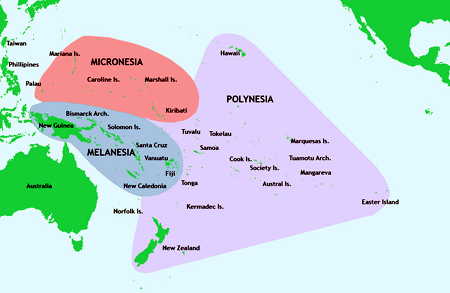 .
.
 .
.
Litteratur |
Dixon, Roland Burrage: Oceanic Mythology I-XVI
(1916).
- http://www.archive.org/details/oceanicmytholog02dixogoog
Ikke alle bind er digitaliseret 2012.
'A highly readable and scholarly cross-cultural study of Pacific
mythology and folklore, covering Polynesia, Micronesia, Melanesia,
Indonesia and Australia. It includes summaries of material only
available in obscure 19th Century scholarly journals.